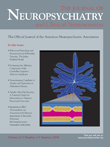Rosiglitazone Effects to Ameliorate Alzheimer’s Disease Pathogenic Features: Insulin Signaling and Neurotrophic Factors
To the Editor: Clinical and basic research has pointed to rosiglitazone as a potential tool for the treatment of the pathogenic and clinical manifestations of Alzheimer’s disease.
Novel treatments with anti-inflammatory drugs, insulin, thiazolidinediones, omega 3 fatty acids, curcumin, statins, and others have brought new hope for physicians and patients with Alzheimer’s disease. Anti-inflammatory effects of peroxisome proliferator-activated receptor-γ are well recognized. However, metabolic factors are not usually considered relevant for Alzheimer’s disease. Although not fully recognized, insulin signaling and other neurotrophic factors seem to play key roles in the pathogenesis of Alzheimer’s disease. There is increasing evidence that metabolic derangements such as type II diabetes mellitus, metabolic syndrome, and obesity are risk factors for cognitive impairment and Alzheimer’s disease. In fact, type II diabetes mellitus and metabolic syndrome seem to be related to other neuropsychiatric diseases such as major depressive disorder, Parkinson’s disease, and bipolar disorder.
One possible mechanism that could mediate metabolic derangements with neuropsychiatric pathologies is trophic signaling deficiency. It is well known that brain-derived neurotrophic factor signaling is impaired in Alzheimer’s disease as well as in major depressive disorder. Brain-derived neurotrophic factor signaling occurs through the tropomyosin-related kinase family of receptor tyrosine kinases. Activation of tropomyosin-related kinase B triggers the phosphatidylinositol-3-OH-kinase-Akt pathway, 1 inactivating glycogen synthase kinase-3β, which is linked to the production of β-amyloid plaques and the hyperphosphorylation of tau, the two pathogenic features of Alzheimer’s disease. Insulin signaling acts through this same intracellular pathway. It has also been shown that insulin signaling deficiency is related to Alzheimer’s disease pathology. 2 Moreover, it seems that insulin signaling regulates the expression of the insulin-degrading enzyme, a protein implicated in β-amyloid degradation. 3
Thiazolidinediones that are used to treat insulin resistance in type II diabetes mellitus patients work to activate peroxisome proliferator-activated receptor-γ, which in turn up-regulates proteins and enzymes related to insulin signaling such as insulin receptor substrates 1 and 2, and phosphatidylinositol-3-OH-kinase. Fuenzalida et al. 4 showed that nerve growth factor signaling pathway activated peroxisome proliferator-activated receptor-γ and that this protects rat hippocampal neurons against β-amyloid toxicity. They speculate that this could be mediated by tropomyosin-related kinase A activation. Even more, peroxisome proliferator-activated receptor-γ inhibited glycogen synthase kinase-3β. 4
Recently, Reger et al. 5 showed beneficial effects of intranasal insulin in memory performance and β-amyloid levels in Alzheimer’s disease patients. Further research with insulin and insulin sensitizers are needed to find a better comprehensive approach for Alzheimer’s disease patients.
1. Elliott E, Ginzburg I: The role of neurotrophins and insulin on tau pathology in Alzheimer’s disease. Rev Neurosci 2006; 17:635–642Google Scholar
2. Clodfelder-Miller BJ, Zmijewska AA, Johnson GV, et al: Tau is hyperphosphorylated at multiple sites in mouse brain in vivo after streptozotocin-induced insulin deficiency. Diabetes 2006; 55:3320–3325Google Scholar
3. Zhao L, Teter B, Morihara T, et al: Insulin-degrading enzyme as a downstream target of insulin receptor signaling cascade: implications for Alzheimer’s disease intervention. J Neurosci 2004; 24:11120–11126Google Scholar
4. Fuenzalida KM, Aguilera MC, Piderit DG, et al: Peroxisome proliferator-activated receptor gamma is a novel target of the nerve growth factor signaling pathway in PC12 cells. J Biol Chem 2005; 280:9604–9609Google Scholar
5. Reger MA, Watson GS, Green PS, et al: Intranasal insulin improves cognition and modulates beta-amyloid in early AD. Neurology 2008; 70:440–448Google Scholar



